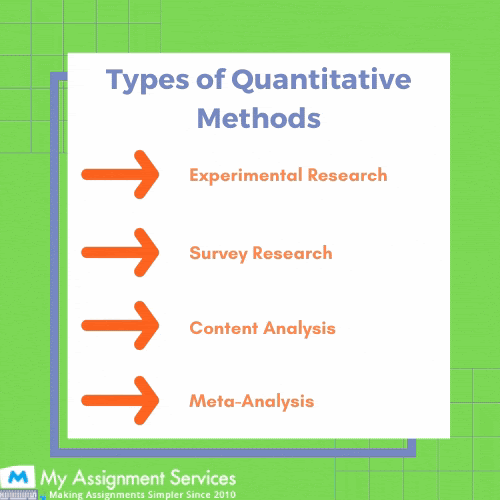
Our tutors can help you with your homework or answer any questions you might have. To fulfill our tutoring mission of online education, our college homework help and online tutoring centers are standing by 24/7, ready to assist college students who need homework help with all aspects of mathematics Founded in by a chemistry professor, 24HourAnswers strives to help college students understand and master their blogger.com more than one million college students have been connected to top academic tutors in + subject areas using our state-of-the-art, HTML5 tutoring platform. One-on-one online sessions and step-by-step written solutions are the foundation of our services Dr. David R. Anderson is a leading author and Professor Emeritus of Quantitative Analysis in the College of Business Administration at the University of Cincinnati. He has served as head of the Department of Quantitative Analysis and Operations Management and as
Online Tutoring & College Homework Help by Professional Tutors
The first step is choosing the right tool. Check out this list of the most popular types of quantitative methods. By Kate Moran. on April 22, Many UX professionals gravitate towards qualitative qual methodologies, which are widely perceived as being easier and cheaper than quantitative quant research. They shy away from the intimidating prospect of larger sample sizes and statistics associated with quant.
Quant methods allow you to:. This article can help you get started — the first step is determining which quant UX research method you need. Each of these methods yields valuable quantitative data, but the techniques vary widely in the type of data collected, as well as the amount of resources and effort required. This article lists the most common use cases for these methods, and estimates cost and difficulty for each.
As with any research method, each of these can be adapted to fit a variety of needs. Depending on your specific circumstances, your costs and difficulty may be different from our rough estimates.
Additionally, you should be aware that each of these methods will require different minimum sample sizes to determine statistical significance. Although not used as often, quantitative usability testing sometimes referred to as usability benchmarking is a lot like qualitative usability testing — users are asked to perform realistic tasks using a product. The primary difference between the two is that qual usability testing prioritizes observations, quantitative methods for business homework help, like identifying usability issues.
In contrast, quant usability testing is focused on collecting metrics like time on task or success. The type of usability testing you choose in-person, remote moderated, or remote unmoderated will impact the cost and difficultly associated with this method. Since the goals of quant and qual usability studies are different, the structure of the test and the tasks used will need to be different as well.
For all the skills you need to run a basic quantitative usability-testing study, see our full-day course Measuring User Experience. Analytics data describe what people are doing with your live product — where they go, what they click on, what features they use, where they come from, and on which pages they decide to leave the site or app.
This information can support a wide variety of UX activities. For an explanation of the differences between analytics and quant usability testing, watch this 2-minute video. For more quantitative methods for business homework help analytics with a special focus on how these methods fit within UX, see our full-day course Analytics and User Experience. For example, you might create two versions of the same call-to-action button label: Get Pricing vs.
Learn More. Then you could track the number of clicks that the button receives in the two versions. Multivariate testing is similar, but involves testing several design elements at once for example, the test could involve different button labels, typography, and placement on the page. Both of these analytics-based experiments are great for deciding among different variations of the same design — and can put an end to team disputes about which version is best. Some teams fail to run the tests as long as they should, and make risky decisions based on small numbers.
In a card-sorting studyparticipants are given content items sometimes literally written on index cards and asked to group and label those items in a way that makes sense to them.
This test can either be conducted in person, quantitative methods for business homework help, using physical cards, or remotely using a card-sorting platform like OptimalSort. What terminology do they use? How do they logically group these concepts together?
Quantitative analysis of the percentage of participants who created similar groupings can help establish which categorization approach would be understandable to most users.
In a tree testparticipants attempt to complete tasks using only the category structure of your site. For example, imagine your product is a pet-supplies website, and this is your top-level hierarchy. You might ask your participants in one task to find the dog collars. Quantitative analysis of the tree-test results will show whether people were able to find the right path to this item in the information hierarchy. How many participants picked the wrong category? For more information about how to design and evaluate information architecture, quantitative methods for business homework help, see our full-day course Information Architecture.
Surveys are a flexible user-research tool. You can administer them in a variety of quantitative methods for business homework help — as short intercept surveys on a live website, in emails, or after a usability test. They can produce combination of quantitative and qualitative data — ratings, proportions of answers for each choice in a multiple-choice question, as well as open-ended responses.
You can even turn qualitative responses to a survey into numerical data see the following section on coding qualitative comments.
You can create your own custom surveys, or you can use one of the many established questionnaires available for example, the System Usability Scale or Net Promoter Score, quantitative methods for business homework help. Quantitative methods for business homework help if you create your own custom questionnaire, you can still track your average scores over time, to monitor product improvements.
For more on designing surveys, quantitative methods for business homework help well as many qualitative user research methods, see our full-day course User Research Methods: From Strategy to Requirements to Design. This technique is less of a data-collection methodology, and more of an analysis approach for qualitative data.
It involves grouping observations from a qualitative study for example, a diary study, survey, focus group, or interviews based on common themes. If you have a lot of observations, you can count the number of instances when a particular theme is mentioned.
For example, imagine you run a diary study asking participants to report every time they use your product in their daily lives for a week, with the goal of understanding in what context they use your products. You may count the instances when people used the product at work, in their homes, or on the go. This method can identify the prevalence or frequency of a specific theme or situation — for example, the frequency of a user complaint or of a UI problem.
This approach is a good way to mine numerical data from large amounts of qualitative information, but it can be quite time consuming, quantitative methods for business homework help.
Quantitative desirability studies attempt to quantify and measure some quality of a product — such as aesthetic appeal, brand strength, tone of voice. These studies can be customized depending on your research questions, but they generally involve first exposing participants to your product either by showing them a still image or by asking them to use the live product or a prototype.
With a large sample size that is representative of your population, trends start to emerge. Eyetracking can help you identify which interface and content elements need to be emphasized or deemphasized, to enable users to reach their goals.
A major obstacle to running eyetracking studies is the highly specialized, prohibitively expensive, and somewhat unstable equipment quantitative methods for business homework help requires lots of training to use.
When trying to determine which quant method to use, lead with your research question. What do you need to know? Some of these methodologies are best suited to very general research questions.
For example:. Other methodologies work well when you have a more specific question you want to answer. There are some grey areas within those recommendations, however. After the research question, the second most influential factor in choosing a methodology is cost.
These methodologies will vary a lot in cost depending on how your implement the study. The tools you use, the number of participants you have, and the amount of time spent by your researchers will all impact the final cost. To make this even more complicated, many teams have widely different research budgets. Again, the cost estimates here are relative. Additionally, they can require travel and equipment rentals.
Eyetracking is the most expensive methodology listed here, and should be employed only by teams with big budgets and research questions that warrant using it. Measuring UX and ROI Full-day course. Return on Investment ROI for Usability4 th Edition Report. Analytics and User Experience Full-day course. Information Architecture Full-day course. User Research Methods: From Strategy to Requirements to Design Full-day course. How to Conduct Eyetracking Studies Free report.
Kate Moran is a Senior User Experience Specialist with Nielsen Norman Group. She conducts research and leads training seminars to help digital product teams expand and improve their UX practice.
Her research findings and recommendations are informed by her background in information theory and design, as well as her development experience. The latest articles about interface usability, website design, and UX research from the Nielsen Norman Group.
Subscribe to the weekly newsletter to get notified about future articles. Watch Statistical Significance in UX3 minute video with Kate Moran :. Advanced User Testing Methods for Accelerating Innovation. Triangulation: Combine Findings from Multiple User Research Methods. Identify and Document Your UX Methods. Between-Subject vs. Within-Subject Study Design in User Research. By Kate Moran Kate Moran on April 22, Topics: quantitative studies,Research Methods Research Methods Research Methods.
Share this article:. When you track a usability metric over time, across many different iterations of a product, you can create charts like this one. When card sort tests are conducted in person, the user sorts and categorizes physical cards.
Each card contains a description of the content it represents. A visualization of your hierarchy might look something like this. Participants in a tree quantitative methods for business homework help are asked to find a specific item in your hierarchy e.
They first see only the top-level categories for example, dog, cat, bird, etc. With semantic differential rating scales like this one, each radio button stands for a numerical value.
SBNM 5411 Lecture 1: Introduction to Quantitative Analysis
, time: 34:24Math Homework Help and Online Tutoring | 24HourAnswers

Apr 05, · Design of Experiments > Research Methods. Quantitative Research vs. Qualitative. Quantitative research is statistical: it has numbers attached to it, like averages, percentages or quotas. Qualitative research uses non-statistical methods. For example, you might perform a study and find that 50% of a district’s students dislike their teachers Founded in by a chemistry professor, 24HourAnswers strives to help college students understand and master their blogger.com more than one million college students have been connected to top academic tutors in + subject areas using our state-of-the-art, HTML5 tutoring platform. One-on-one online sessions and step-by-step written solutions are the foundation of our services Apr 22, · Each of these methods yields valuable quantitative data, but the techniques vary widely in the type of data collected, as well as the amount of resources and effort required. This article lists the most common use cases for these methods, and estimates cost and difficulty for each
No comments:
Post a Comment